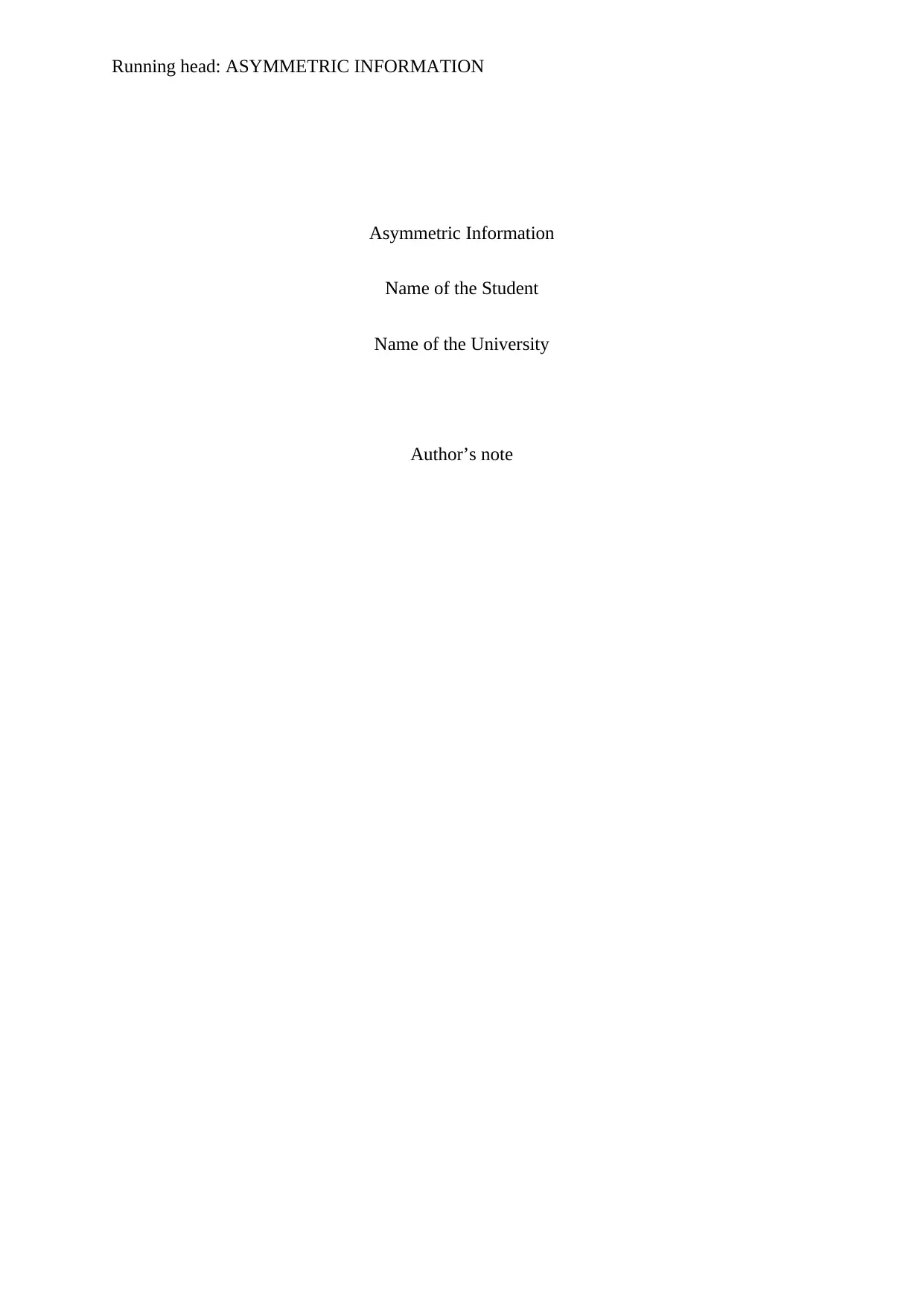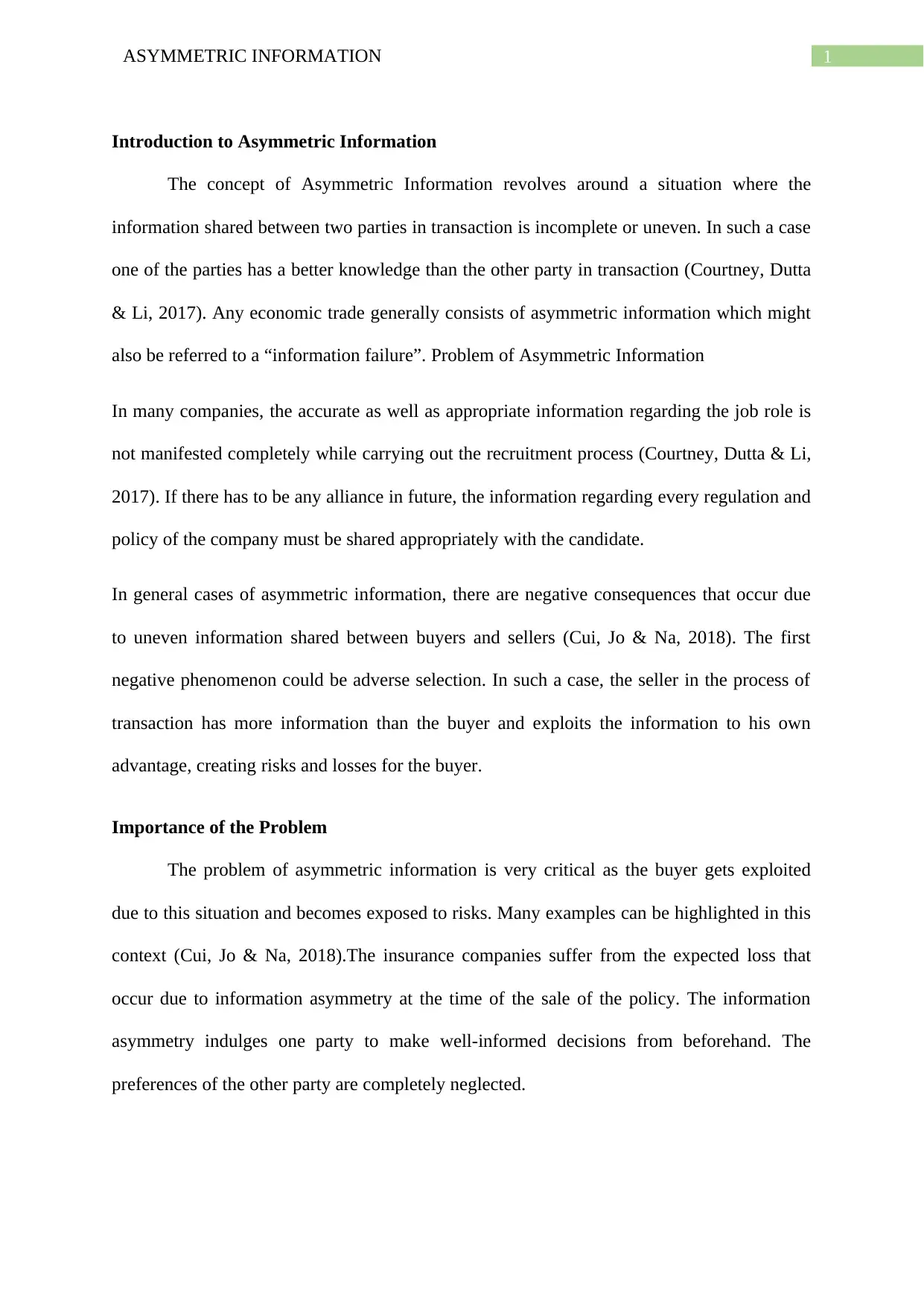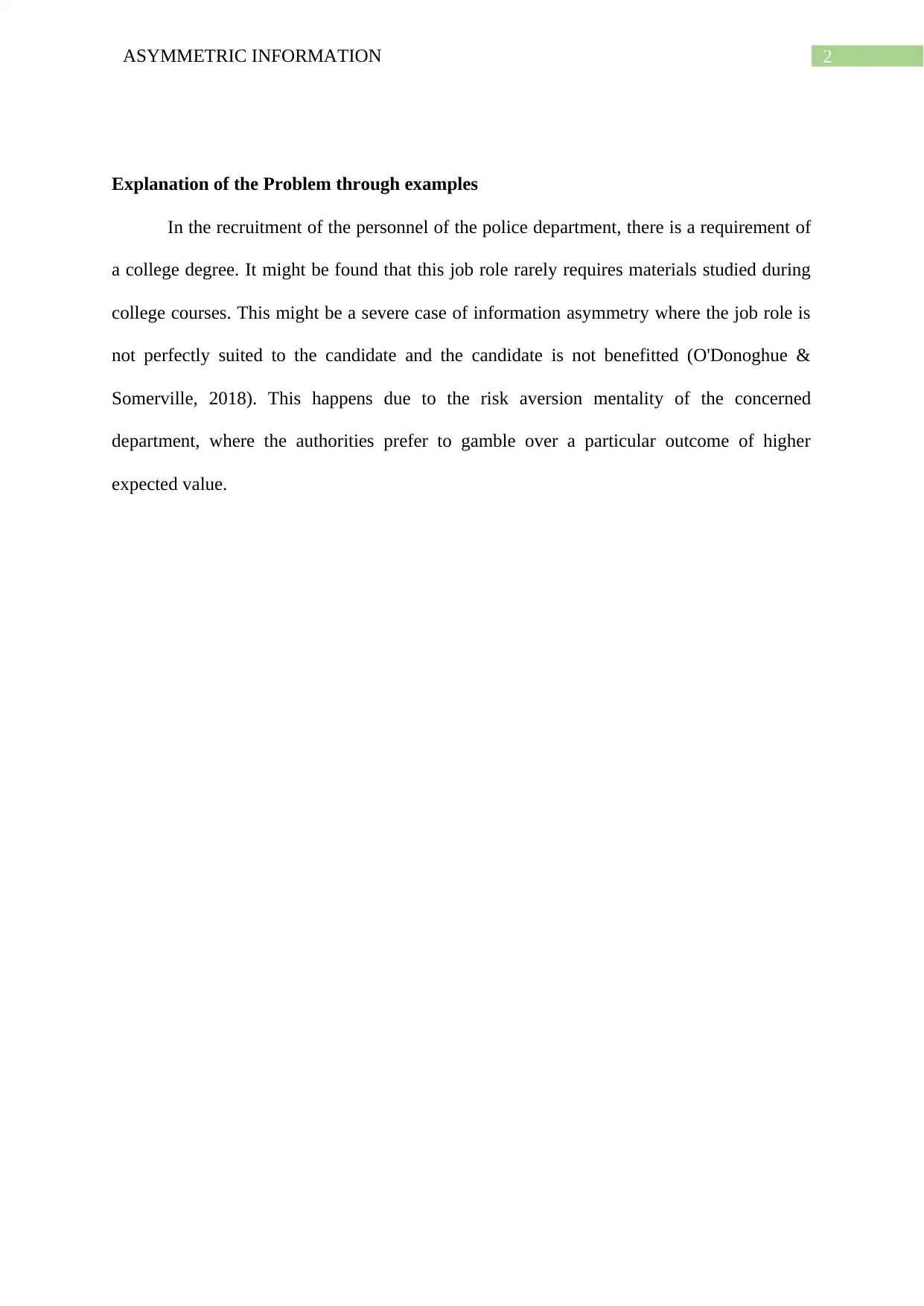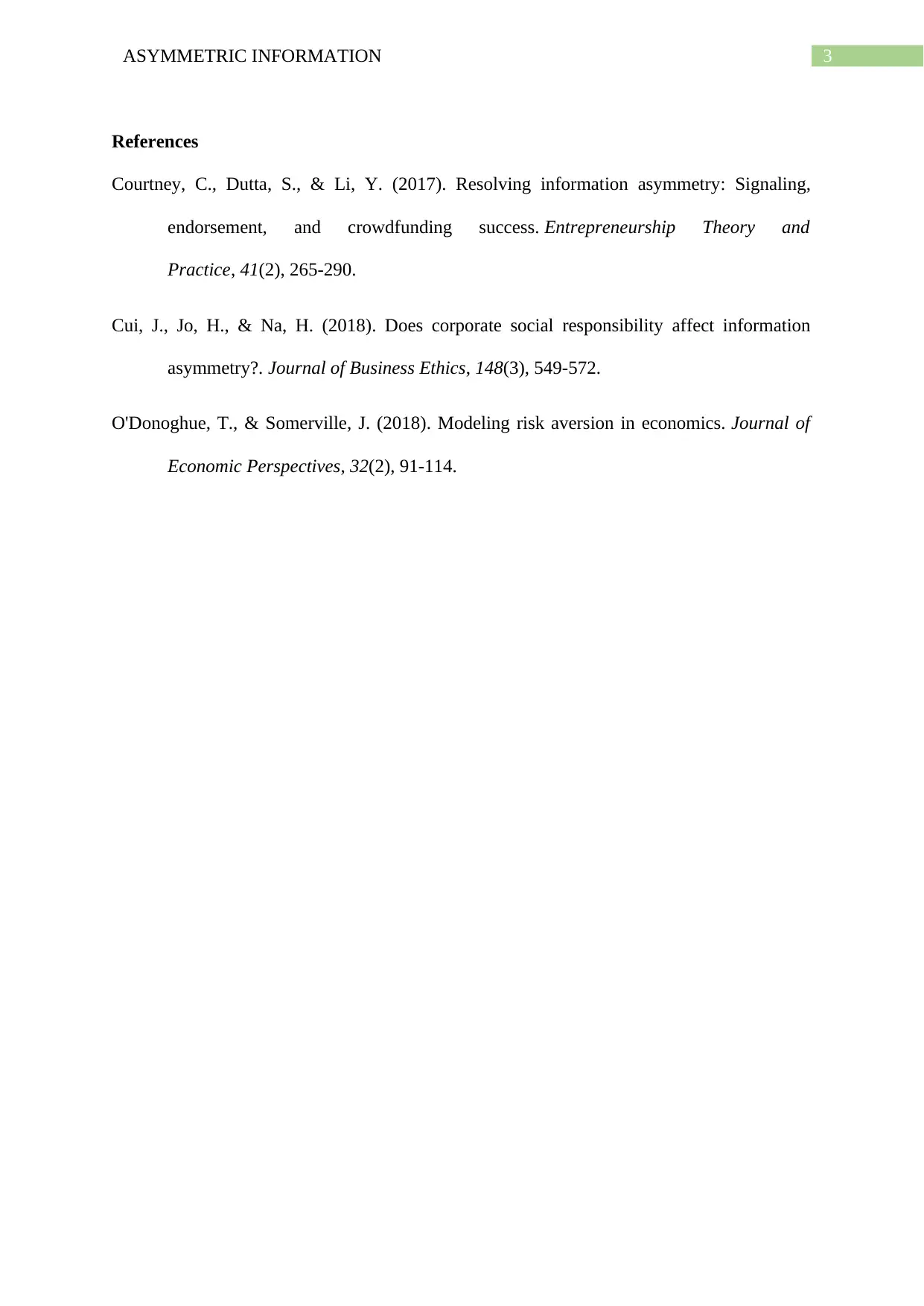Asymmetric Information: Problem, Examples, and Solutions
VerifiedAdded on 2022/09/17
|4
|548
|26
Homework Assignment
AI Summary
This assignment delves into the concept of asymmetric information in economics, highlighting situations where one party possesses more information than the other, leading to potential market inefficiencies. The paper discusses the core problem of asymmetric information, with a focus on how it can lead to adverse selection and other negative consequences, using recruitment processes as an example. The assignment emphasizes the importance of understanding asymmetric information and its impact on decision-making, especially in scenarios involving risk and uncertainty. The paper provides an overview of how the problem manifests, and why it is critical to understand the implications of this information asymmetry.
1 out of 4






![[object Object]](/_next/static/media/star-bottom.7253800d.svg)